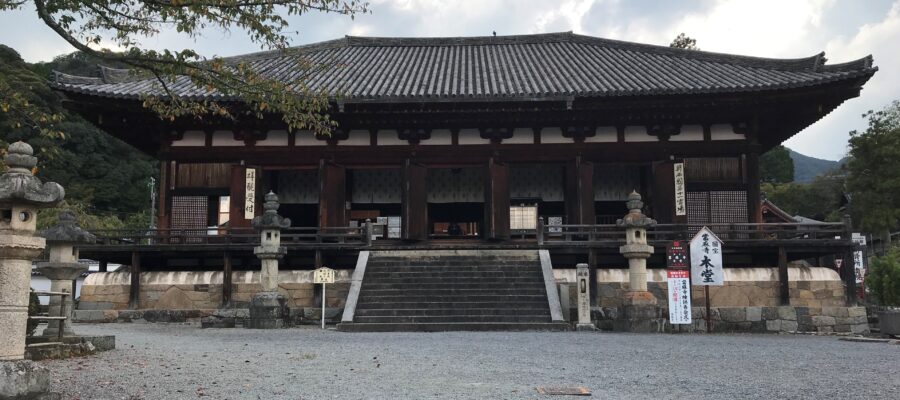見ごたえのある仏像
近鉄・南大阪線の当麻寺駅から西に15分ほど歩くと當麻寺に突き当たります。新西国をすべて回った訳ではないので断言できませんが、このお寺はベスト3には必ず入ると思われるほど見ごたえ十分でした。行くまで、ほとんど知らなかったのを恥ずかしく思います。
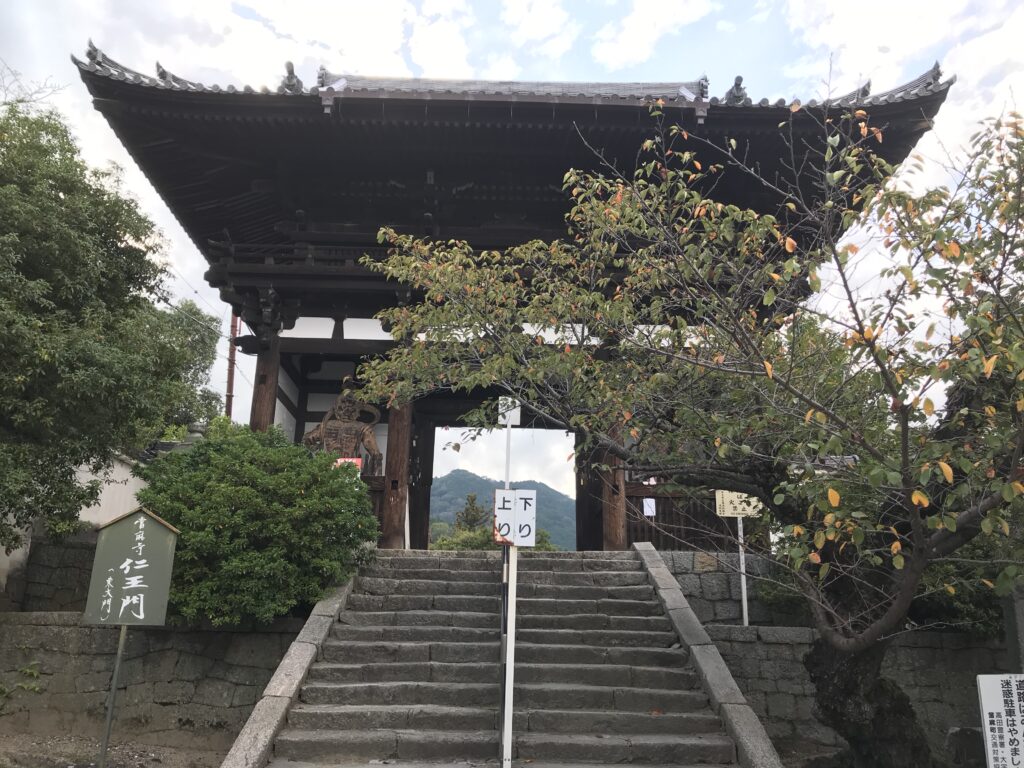
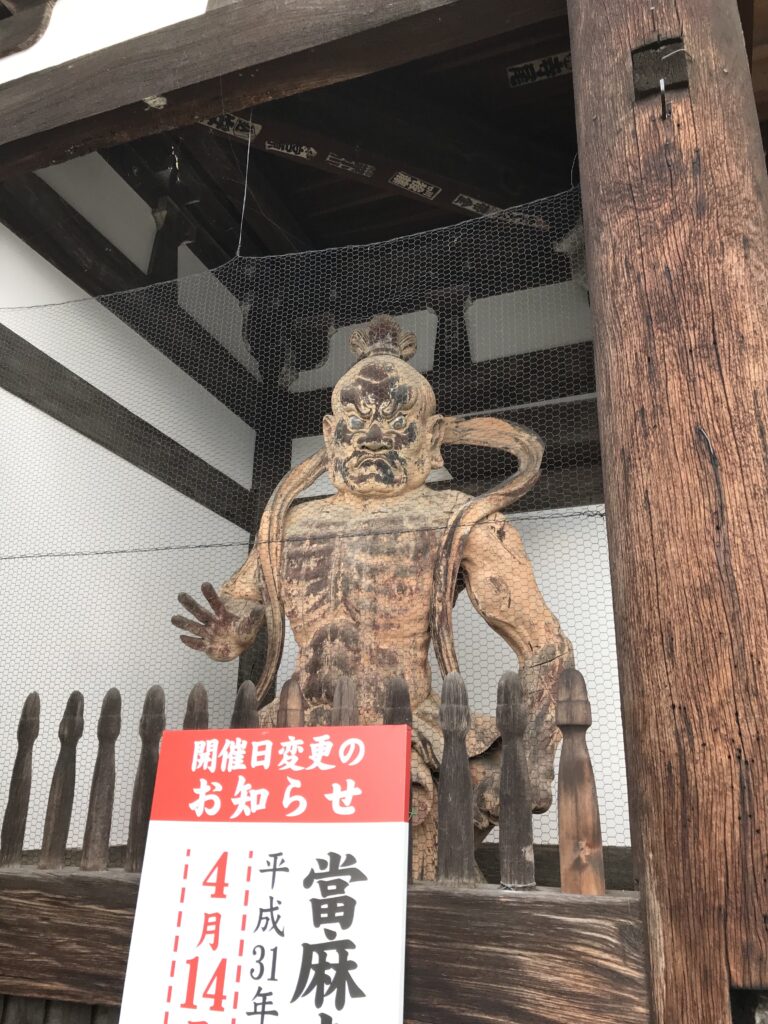
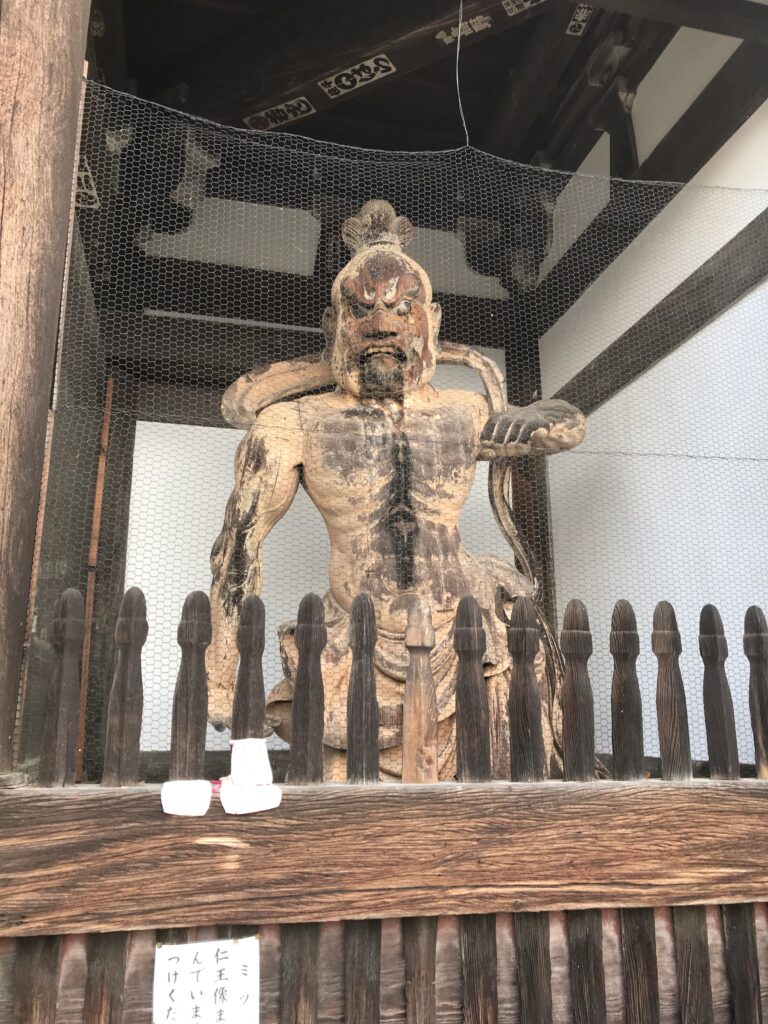
曼荼羅に手を合わせる
仁王門をくぐると、開けた境内に伽藍が散在するように見えます。しかし、その鐘楼一つとっても白鳳時代のもので、国宝になっています。まずは、曼荼羅堂に向かい室町時代に国宝の根本曼荼羅を転写した文亀曼荼羅を見ました。堂内ではテープで解説をしてくれていまして、薄暗い中、模写といえ大きな曼荼羅に見入っていました。
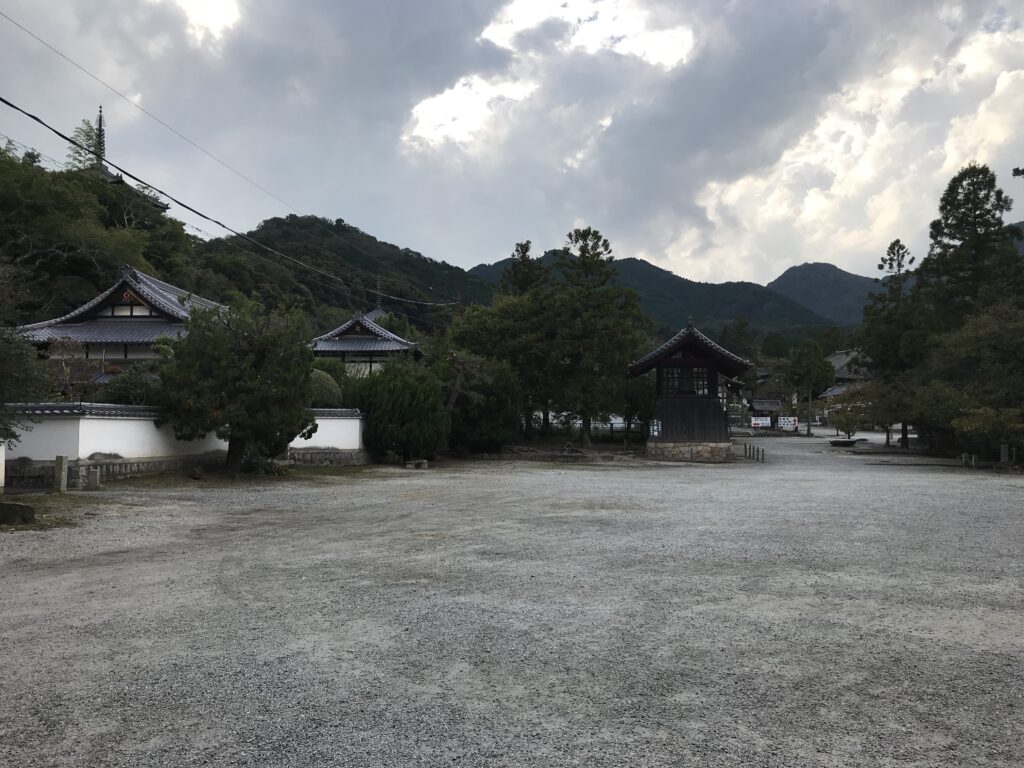
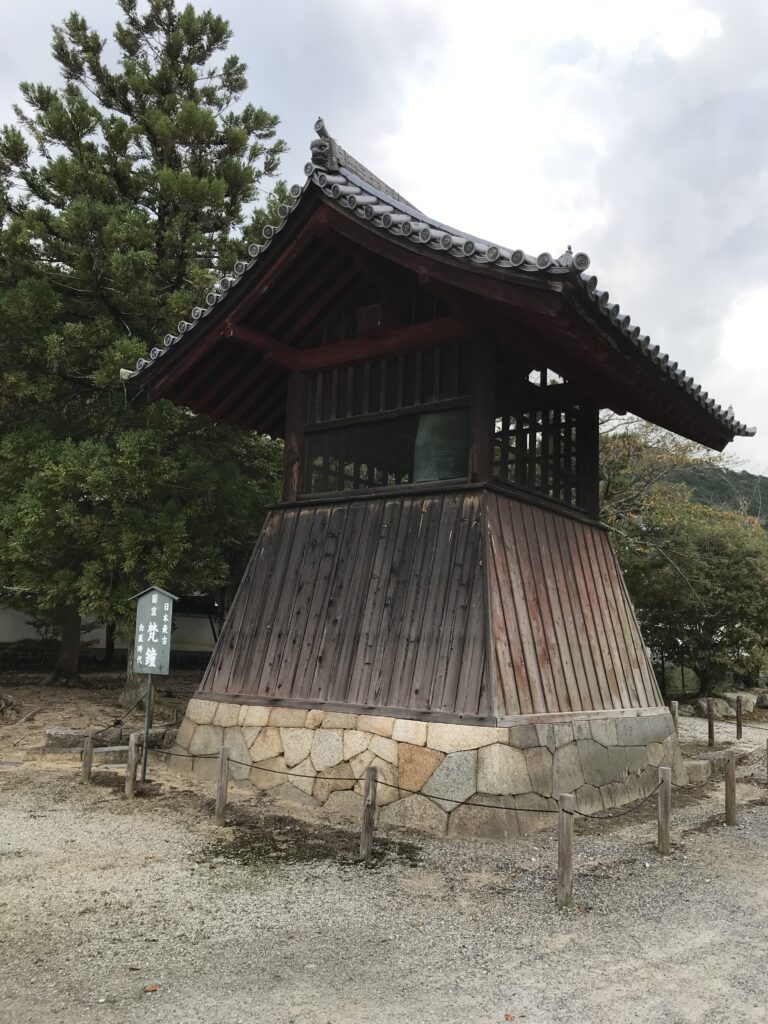
次に講堂で御本尊の阿弥陀如来像にお参りした後、向かいにある金堂に入りました。ここではお寺の人かボランティアかわかりませんが、初老の男性の方に案内いただきました。国宝の弥勒佛塑像を中心に四天王の像が周りを囲んでいます。ここでは鎌倉時代に造られた多聞天以外は、すべて白鳳時代のものだそうです。写真を撮れないのが残念でしたが、是非自分の目でご覧いただきた仏像です。
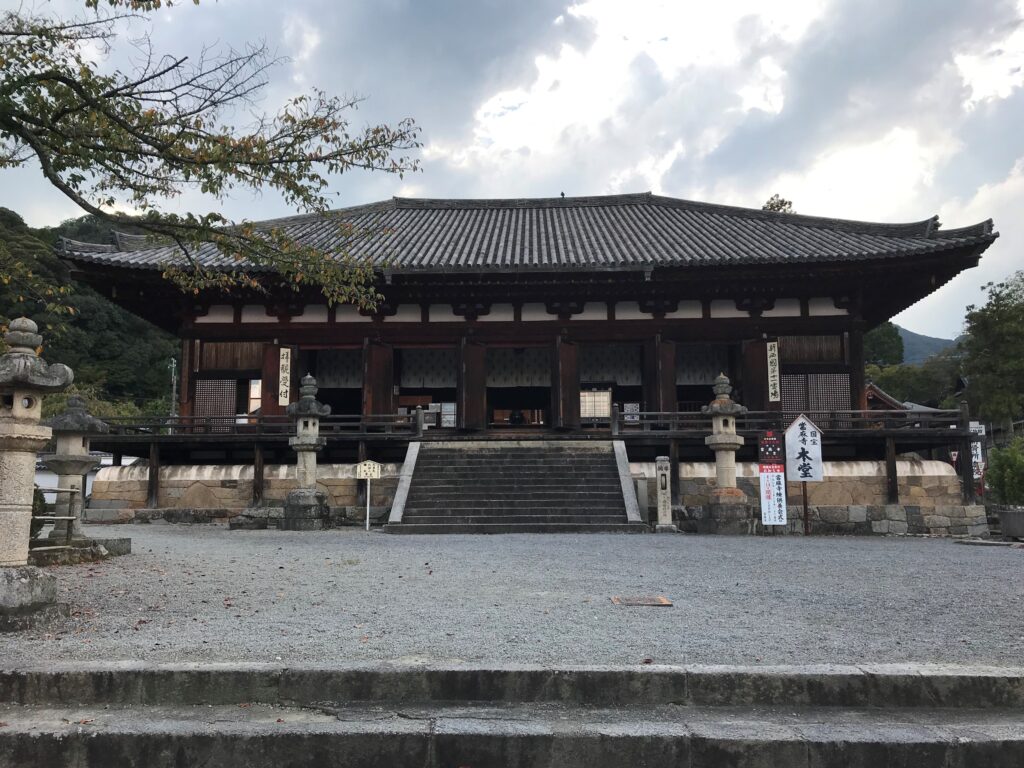
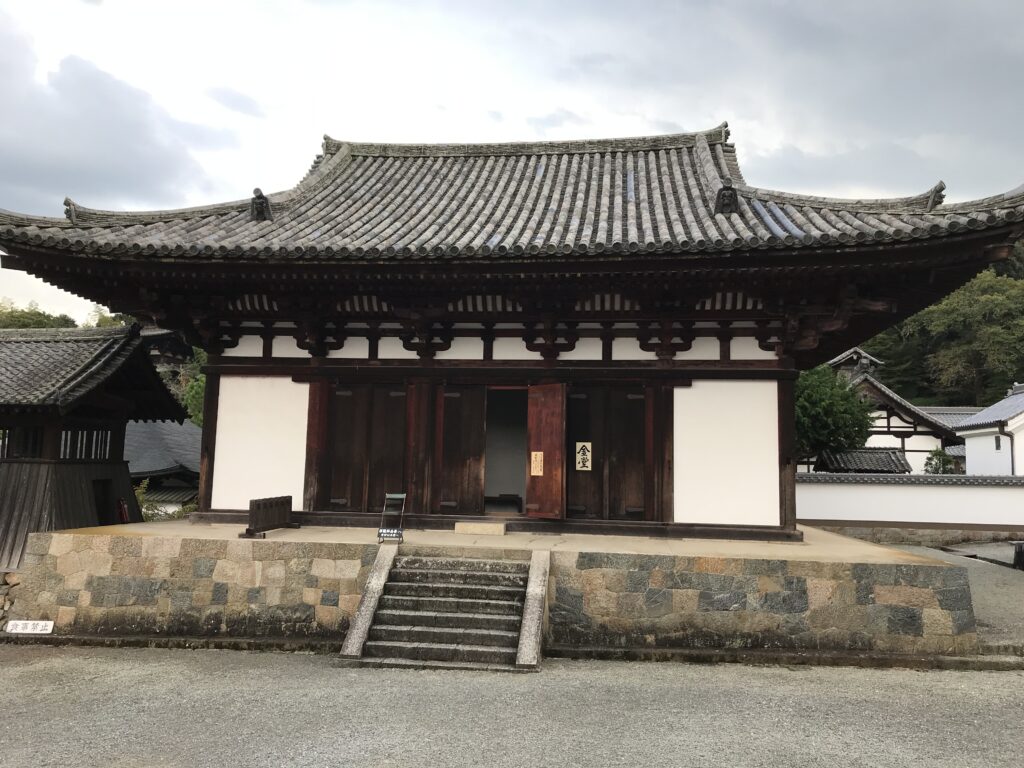
1000年の歴史を刻む2つの塔
お堂から外にでますと、三重塔が2つ見えます。西塔と東塔です。古代の塔が二つとも現存して並んでいるのは、日本で唯一、ここだけです。東塔が當麻寺で一番古くから現在に残っている建物です。西塔は約100年ほど遅れて建てられたそうです。いずれも1000年以上前のものですから、貴重な建物に違いはありません。
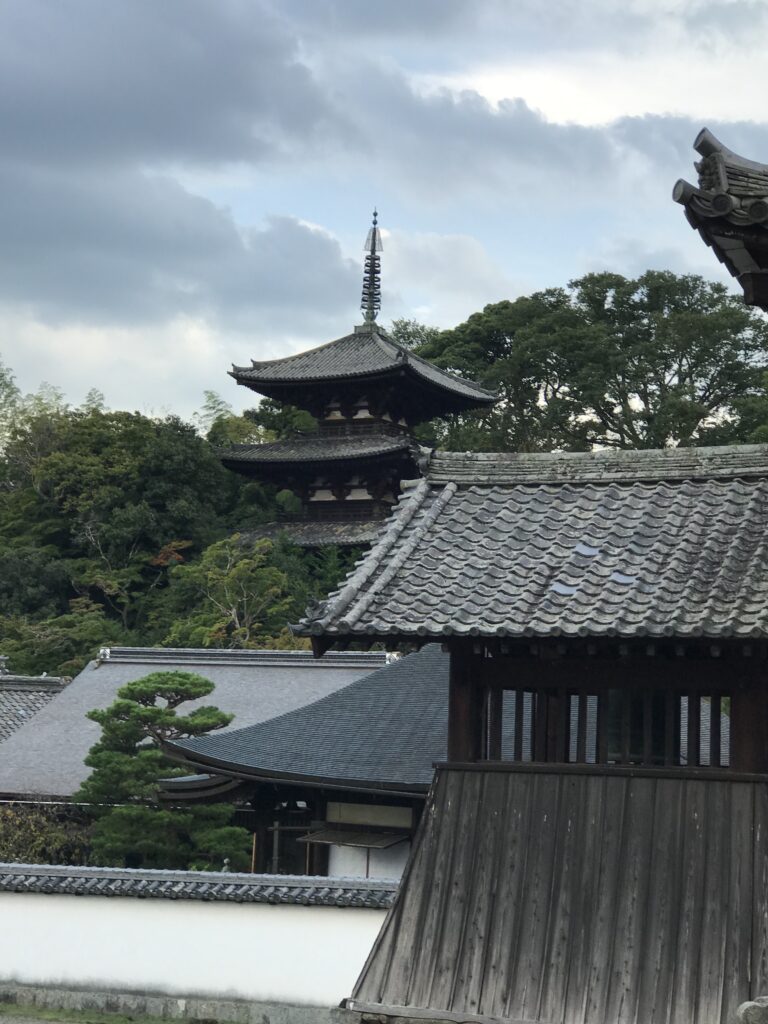
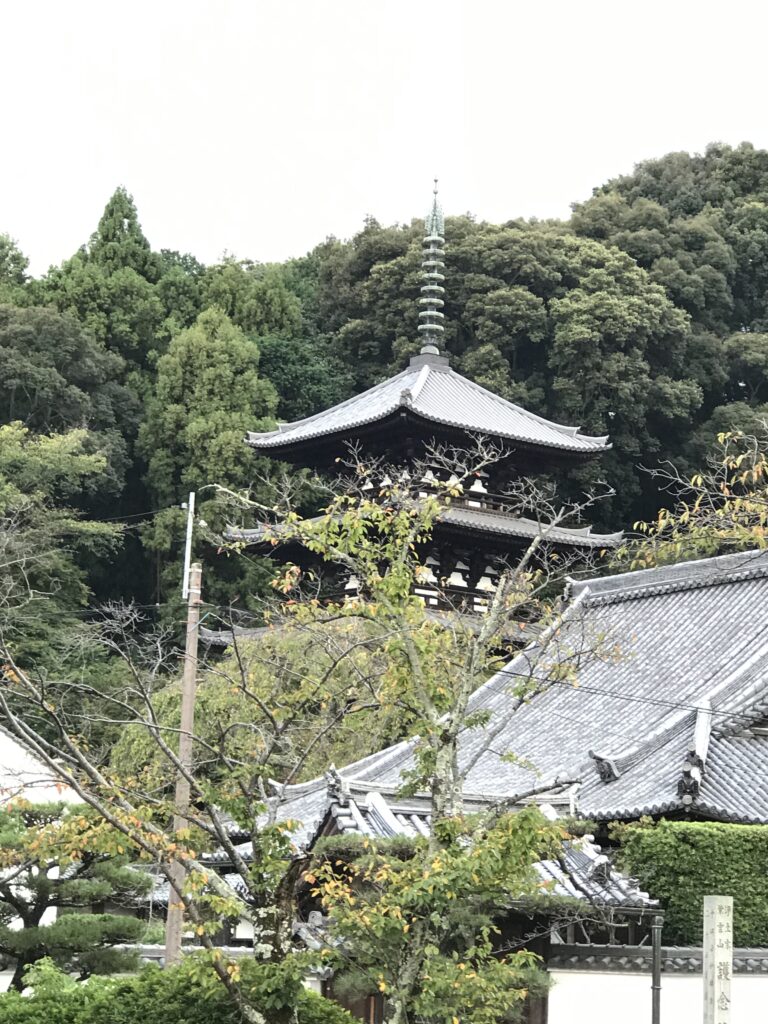
よく見ると、東と西の塔で、デザインが異なります。写真ではわかりにくいと思いますので、実際に現地を訪れて、その違いを発見してみてください。(完)
當麻寺の御朱印
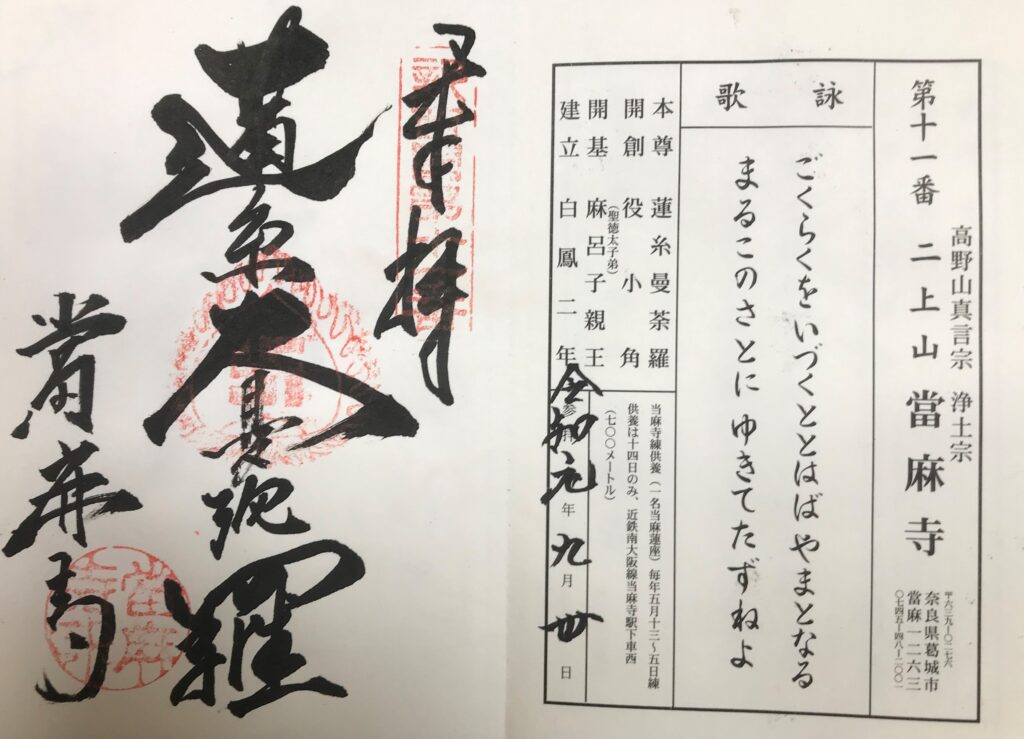
當麻寺が紹介されている書籍
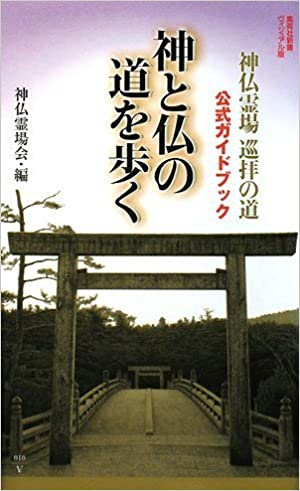
神と仏の道を歩く 神仏霊場巡拝の道公式ガイドブック (集英社新書ヴィジュアル版) [ 神仏霊場会 ]
価格:1,466円
(2021/5/6 09:24時点)
感想(5件)
Taimadera Temple (Nara)
A Buddha image worth seeing
A 15-minute walk west from Taimadera Station on the Kintetsu Minami-Osaka Line will bring you to Taimadera Temple. I cannot say for sure since I did not visit all of the new western provinces, but this temple was so impressive that it must be one of the top three. I am ashamed to admit that I knew very little about it before I went.
Hands together facing the mandala
After passing through the Niomon Gate, the temple buildings appear to be scattered throughout the open precincts. However, even the bell tower itself is from the Hakuho period and is a national treasure. First, I went to the mandala hall to see the Bungame Mandala, a transcription of the National Treasure Nemoto Mandala from the Muromachi period (1336-1573). In the hall, a tape-recorded explanation was provided, and in the dim light, I gazed at the large mandala, even though it was a copy.
Next, I visited the main Amida Nyorai statue in the auditorium, and then entered the Kondo hall across the street. I am not sure if he was a temple staff member or a volunteer, but we were guided by an elderly man. The statue of Maitreya Buddha, a national treasure, is the center of the hall, surrounded by statues of the Four Heavenly Kings. All of the statues here are said to be from the Hakuho period, except for Tamonten, which was built in the Kamakura period. It was regrettable that I could not take pictures, but I would like you to see the statues for yourself.
Two towers with 1000 years of history
Outside the hall, two three-story pagodas can be seen. They are the West Pagoda and the East Pagoda. This is the only place in Japan where both ancient pagodas are still standing side by side. The east tower is the oldest surviving building in Taima Temple. The west pagoda was built about 100 years later. Both are more than 1,000 years old, so they are no less valuable buildings.
If you look closely, you will see that the east and west towers have different designs. It may be difficult to tell from the pictures, so please visit the actual site and discover the differences. (End)
Temple Taimadera (Nara)
Une image de Bouddha qui vaut la peine d’être vue
En 15 minutes de marche vers l’ouest depuis la station Taimadera sur la ligne Kintetsu Minami-Osaka, vous arriverez au temple Taimadera. Je ne peux pas en être sûr puisque je n’ai pas visité toutes les nouvelles provinces occidentales, mais ce temple était si impressionnant qu’il doit faire partie du top 3. J’ai honte d’admettre que j’en savais très peu avant d’y aller.
Mains jointes face au mandala
Après avoir franchi la porte Niomon, les bâtiments du temple semblent éparpillés dans l’enceinte ouverte. Cependant, le clocher lui-même date de la période Hakuho et constitue un trésor national. Je me suis d’abord rendu dans la salle des mandalas pour voir le Bungame Mandala, une transcription du trésor national Nemoto Mandala de la période Muromachi (1336-1573). Dans la salle, une explication enregistrée sur bande était fournie et, dans la faible lumière, j’ai contemplé le grand mandala, même s’il s’agissait d’une copie.
Ensuite, j’ai visité la principale statue d’Amida Nyorai dans l’auditorium, puis je suis entré dans la salle Kondo, de l’autre côté de la rue. Je ne sais pas s’il s’agissait d’un membre du personnel du temple ou d’un bénévole, mais nous avons été guidés par un homme âgé. La statue du Bouddha Maitreya, un trésor national, est au centre de la salle, entourée des statues des quatre rois célestes. Toutes les statues ici sont censées être de la période Hakuho, à l’exception de Tamonten, qui a été construite à l’époque Kamakura. Il est regrettable que je n’aie pas pu prendre de photos, mais j’aimerais que vous puissiez voir les statues par vous-même.
Deux tours avec 1000 ans d’histoire
A l’extérieur du hall, on peut voir deux pagodes à trois étages. Il s’agit de la Pagode Ouest et de la Pagode Est. C’est le seul endroit au Japon où les deux pagodes anciennes sont encore debout côte à côte. La tour orientale est le plus ancien bâtiment du temple Taima qui subsiste. La pagode ouest a été construite environ 100 ans plus tard. Toutes deux ont plus de 1 000 ans, ce qui en fait des bâtiments tout aussi précieux.
Si vous regardez de près, vous verrez que les tours est et ouest ont des conceptions différentes. Il peut être difficile de s’en rendre compte sur les photos, alors visitez le site réel et découvrez les différences. (Fin)
